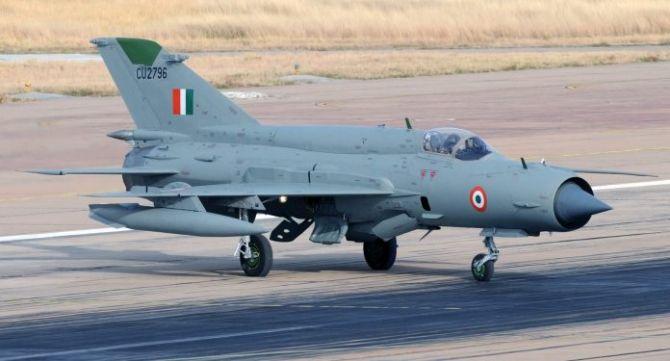'There was not a moment when the guns were out of action.'

"There were times when we fired at least 2,000 rounds in a 24 hour cycle without getting tired. The crew was awake for 24 to 72 hours," Major General Ajay Pal Singh, VSM, (retd), recalls in a conversation with Rediff.com's Archana Masih on Vijay Diwas.
The general, who was a young major during the Kargil War, recounts how India's artillery guns proved to be a game-changer.
The first of a two-part interview:
Every year on July 26 when the nation celebrates victory in the Kargil war, what are the thoughts that go through your mind?
I look back to those days 24 years ago when I was posted in the Gurez sector next to Kargil and I think of all of us who took part in the operations. We were raring to go. We wanted every inch of our land.
Our brave soldiers captured bunker by bunker, peak by peak in the Kargil sector and other sites in that area.
Those thoughts are a reminder of the role of the Indian Army in safeguarding the country's valour and honour. I retired two years back, but if I'm called in the service of the country, I will go and defend my land.
A soldier is always a soldier.
You were a young major at that time, can you tell us how the war unfolded before your eyes?
I was posted in the Kupwara sector from 1998 to 2000.
There was a system in the Indian Army that during the winter both India and Pakistan would vacate the peaks because of the snow. The posts would be reoccupied in the summer. But the Pakistanis did not go back -- along with their regular soldiers and terrorists -- they occupied those posts without the knowledge of the Indian Armed Forces or the security agencies.
When we came to know, we moved fast. As I was posted in Kupwara, I could see infantry and artillery units moving into that direction every day. A lot of artillery and infantry was accumulated in the Kupwara-Gurez sector and we started the operation around May 15-16, 1999.
Initially, it was difficult because many soldiers had come from the plains. It was very difficult for the soldiers to survive and advance in the mountainous terrain and altitude because the enemy was well fortified.
The Pakistanis were on a height; they had full view of our soldiers and could fire at them. But after we got our full equipment, clothing etc, in 4-5 days, we attacked the enemy with full josh. Then there was no holding back, we kept moving forward, captured all the posts from the Pakistanis and restored our soldiers on those posts.

Where were your guns and men positioned? What was the sentiment of the men under your command?
There is a thin boundary between Gurez-Kargil, we moved closer to the Kargil sector on the extreme north. The range of our guns could target enemy posts.
I was commanding a battery of six guns. We kept firing our guns throughout the war and kept demolishing enemy posts with our artillery shells -- pounding them day and night.
A battery of six guns covers an area of 250x250 metres of the enemy. It has a devastating effect and can destroy men and material that are in that range.
We had 130 mm medium Russian-made guns that had proved their mettle in the 1971 War. They are the most robust and reliable guns of the Indian Army. They have a range of approximately 27 kilometres and can fire high explosive content onto the enemy post.
The guns were fired day and night and were always functional. There was not a moment when the guns were out of action.

How many rounds were you firing? There must have been days when you were firing non-stop?
During the war between May to July, they were patches where we fired at least 2,000 rounds in a 24 hour cycle without getting tired. The crew was awake for 24-72 hours. Artillery fire demolishes enemy posts, paving way for the infantry to capture the post.
In two-and-a-half months of the Kargil war, there were at least 15-20 days during which we were continuously firing 24/7.
It required nine people to man, fire, move and maintain the gun:
Commander
A person to lay the gun into a particular direction and elevation
Two people to prepare ammunition shells
Two people to load the shell into the gun
Two persons for replenishment
One driver

Tell us about the men under your command and what was it leading them during war?
I was a major and had approximately 120 men under my command. I used to be with them throughout the night and day. We used to make tea together, drink and eat together.
It was my duty to keep them motivated. They were also charged because the nation's pride was at stake for the soldiers and even the citizens of India.
We all wanted to get our posts back. As we started gaining success the morale went sky high.

You must have seen the casualties arriving which must have been such a sad thing to confront during the war?
That is the reality of a war. We have never imposed a war on ourselves. It is imposed by situations and circumstances.
When a soldier is killed in action it impact the minds of soldiers and officers, but we get back to our work and draw motivation to do better.
There were 526 casualties, including 26-27 officers. We paid a heavy price for victory.
- Part 2 of the Interview: 'We demolished enemy posts'
Feature Presentation: Aslam Hunani/Rediff.com










